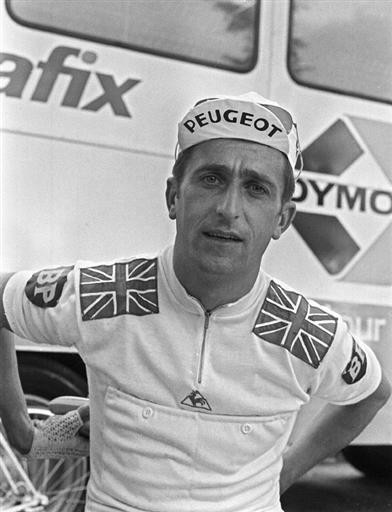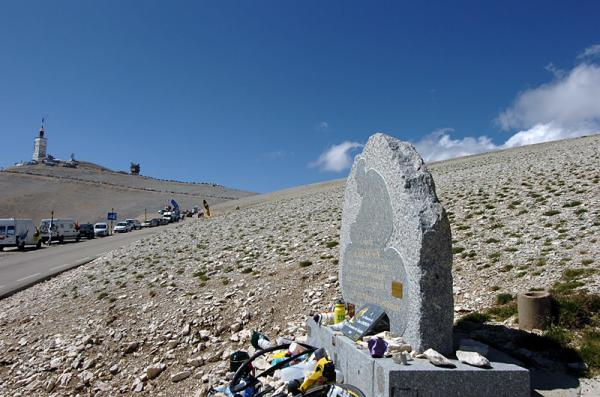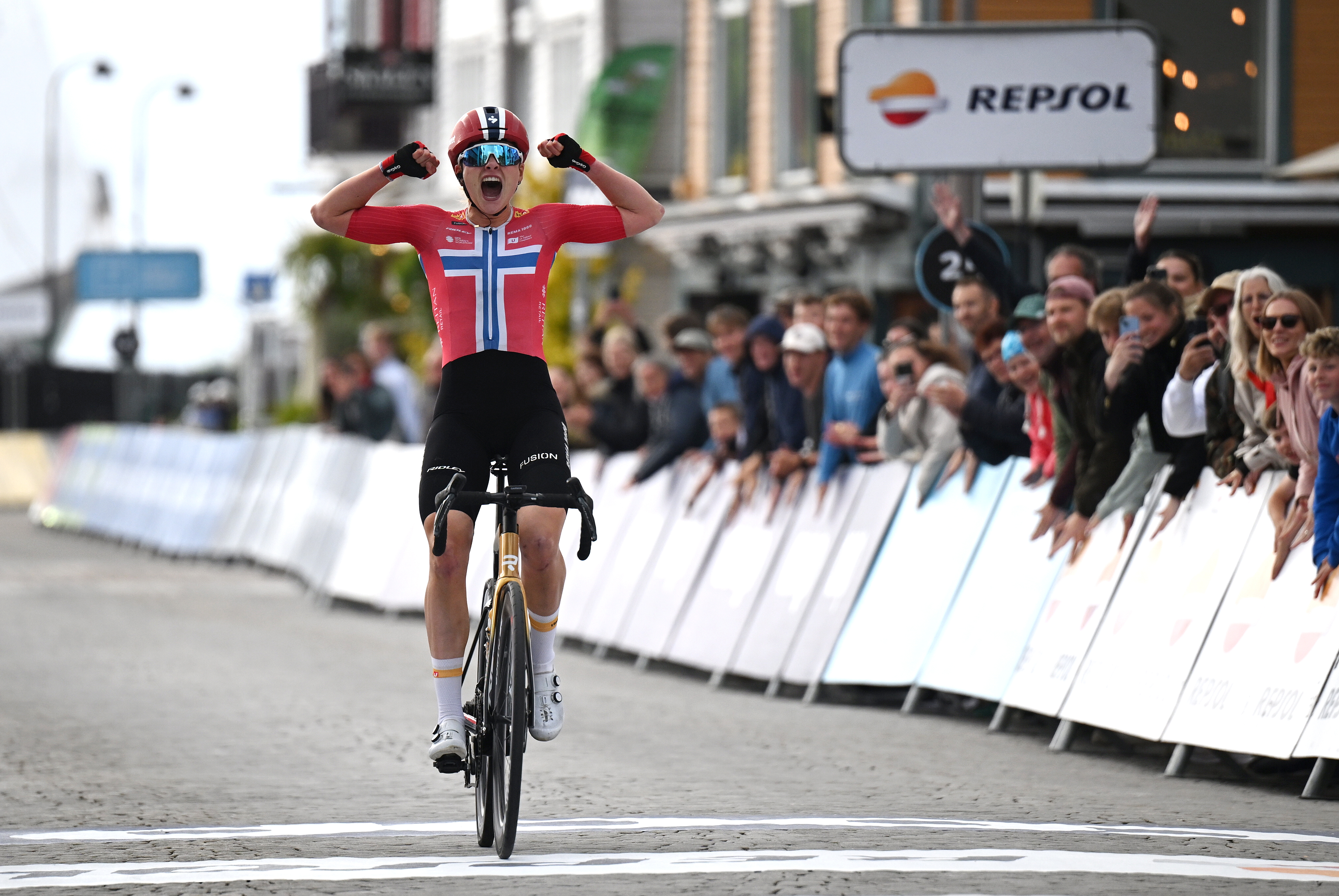British Tour de France riders pay tribute to Tom Simpson
Cavendish, Millar, Wegelius and Wiggins pay respects on Ventoux


Whenever Mont Ventoux features on the route of the Tour de France it has special significance for British riders. A memorial to their compatriot, Tom Simpson, who died during the 1967 Tour, stands at the spot where he collapsed, 1.5km from the summit.
This year, with Bradley Wiggins attempting to become Britain’s highest ever finisher and the first Englishman to place in the top ten since Simpson, its significance was enhanced by the presence of two special guests. Simpson’s daughter, Joanne, who had travelled from her home in Ghent, and three-time Tour winner Greg LeMond.
"It’s an important place for cycling," said LeMond. "Because of Tom Simpson’s death dope tests were introduced. Many more cyclists would have died if it hadn’t been for him."
"A la memoire de Tom Simpson," reads the inscription on the smooth marble outline of a racing cyclist – a good likeness of Simpson, with the familiar hook nose and hunched shoulders. "Ambassadeur Sportif Britannnique."
Some have compared Wiggins, in appearance, to Simpson. Like Simpson, he is tall – at 6ft 3ins, an inch taller than Simpson – lean, and he also has the distinctive nose. But the links, as Joanne Simpson explained, go beyond their appearance.
"I just like to be here, I feel my dad is here rather than buried in England," she said. "For me this is his burial place."
She has followed Wiggins’s progress with great interest. "I lived with his father, you know," she said. "Garry Wiggins lived in the same digs as me in Ghent. I remember Brad being born."
The latest race content, interviews, features, reviews and expert buying guides, direct to your inbox!
Wiggins, when he passed the memorial and the small knot of spectators gathered there, was fully committed to his pursuit of Alberto Contador, Lance Armstrong and the Schleck brothers in defence of his fourth place overall. While Wiggins couldn’t afford even a glance at the memorial during the stage, he later communicated a message via Twitter. "Shed a tear today for Tom," read his post. "I had a little extra strength today from somewhere. Had a photo of the man on my top tube."
The other three British cyclists in the Tour all paid their own tributes, Charley Wegelius turning towards the monument as he rode past, and throwing his water bottle towards it, to be added to the pile of cycling-related knickknacks – bidons, caps, shirts, inner tubes – gathered around it.
Then came Mark Cavendish, who removed his helmet, and just behind him David Millar, who reached into his back pocket, removed a cotton Garmin cap, and tossed it over the fence in the direction of the statue. The gesture was clearly planned in advance. "To Tommy, RIP, David Millar," read the scrawled message.
As Millar knows only too well, Simpson, who died with amphetamines in his pocket in an era when there were no dope tests and rampant abuse of drugs, the British rider’s legacy goes beyond his palmares. A legacy, that even in a Tour so far free of any positive drug tests, should not be forgotten.
As Joanne Simpson also noted, with some disappointment, that it was telling that none of the Tour officials stopped to pay their respects as they passed. "They have done nothing," she said.
Of the teams, only Marc Madiot, the director of Française des Jeux, paid any kind of tribute. Madiot stopped his car and climbed the thirteen steps to the monument to leave a bouquet of flowers.
Richard Moore is a freelance journalist and author. His first book, In Search of Robert Millar (HarperSport), won Best Biography at the 2008 British Sports Book Awards. His second book, Heroes, Villains & Velodromes (HarperSport), was long-listed for the 2008 William Hill Sports Book of the Year.
He writes on sport, specialising in cycling, and is a regular contributor to Cyclingnews, the Guardian, skyports.com, the Scotsman and Procycling magazine.
He is also a former racing cyclist who represented Scotland at the 1998 Commonwealth Games and Great Britain at the 1998 Tour de Langkawi
His next book, Slaying the Badger: LeMond, Hinault and the Greatest Ever Tour de France, will be published by Yellow Jersey in May 2011.
Another book, Sky’s the Limit: British Cycling’s Quest to Conquer the Tour de France, will also be published by HarperSport in June 2011.
